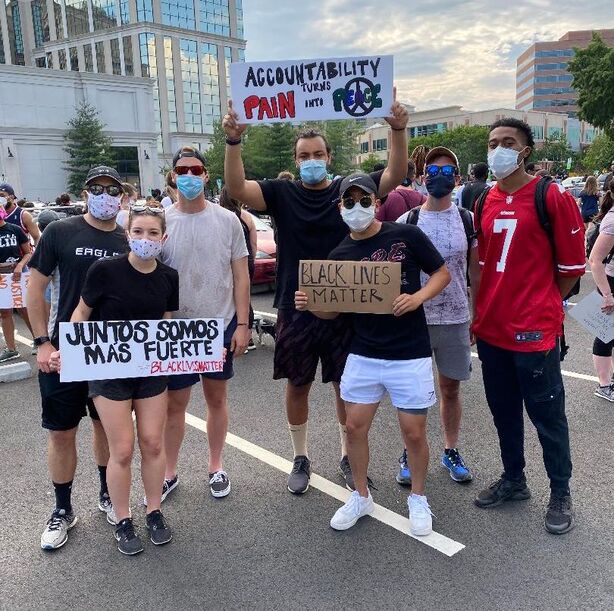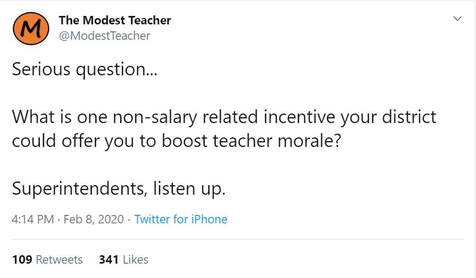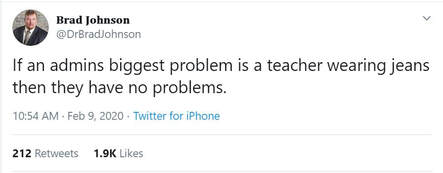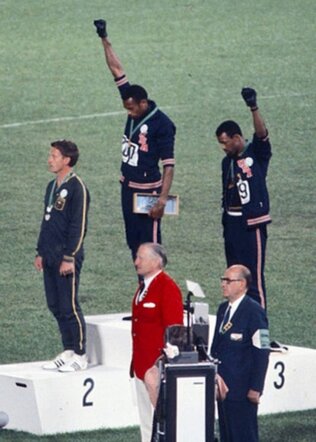|
Submission by Guest Author
Financial literacy is vital to success in life and should be a part of any young person's education. By learning how finances work, young people will understand how, and why, to plan carefully as they make key financial decisions later in life. Why Financial Literacy Should Be Taught in Schools
Failure to acquire financial literacy can lead to catastrophic crises, such as bankruptcies, foreclosures, evictions, homelessness, inability to cover emergency expenses, inability to obtain desired medical or dental services, and other dire yet avoidable scenarios.
Conversely, acquiring skills in personal finance management can enable one to enjoy financial stability and earn exponentially more — through long-term investing — than one can from one’s salary. Financial literacy empowers an individual to live happily, healthily and securely throughout his or her life. Consider financial security impacts every facet of life including: ● Career choices ● Stress levels ● Home Buying and renting ● Marriage ● Raising children ● Dining, travel and entertainment ● Retirement ● Health care Understand How the World Works
Financial literacy also includes understanding how financial markets work. It will need to cover stocks, bonds, mutual funds, ETFs, and commodities, as well as the world’s great exchanges, like the London Metal Exchange, the Chicago Mercantile Exchange, and Intercontinental Exchange.
Such an education will also include the various instruments that can be used for investments, such as options, futures, and other securities. And it should include basic ways that students can analyze their investment choices such as comparing real estate investments to gold. Understanding these things will help students better grasp the meaning of national, regional, and world events. And it will provide the groundwork for a lifetime of delayed gratification — saving and investing. Stability of a Nation
Sounds finances also bolster the stability of a country. For example, research shows that the most stable societies are those where the majority of citizens diligently save and can therefore provide for themselves in emergencies and in retirement. The latter is particularly important, as with health care advances, people are living longer and need a larger “nest egg” than in decades past, in order to retire comfortably.
Savings rates vary between nations: China has one of the world’s highest rates, its citizens save an average of 25% of each paycheck. By contrast, Americans are an average of over $90,000 in debt. But during the uncertainty of the pandemic, the average savings rate of Americans reached over 32%. By contrast, their savings rate averaged between 6%-8% over the preceding decade. That said a nation’s debt also plays a factor in the stability of a nation, and helping students understand America’s debt can help them become informed voters. Understanding financial markets, including how commodities and stock exchanges work, as well as securities, is essential.
In a survey conducted by Credit Karma and Qualtrics, 63% of participants said they wanted financial literacy taught in schools.
Yet, while there's great consensus about the need for financial literacy in education, opinions on how, exactly to implement that objective vary. For instance, in that survey, roughly one-third each of respondents believed financial literacy education should begin in elementary, middle or high school, with small outliers, comprising about 5%, believing it should begin in college. Steps for Implementing Financial Literacy in Education
In 2007, the Consumer Financial Protection Bureau published, "A guide for advancing K-12 financial education" to help resolve some of these questions and to help educational institutions implement such programs. In this report, the authors parse the daunting project into a sequence of digestible actions:
AccessibilityImplementing financial literacy into the education systems of various school districts, each with its own unique set of challenges and resources, will require careful attention, and perhaps adaptation to concerns about equal accessibility to knowledge. Education Gaps
Financial literacy education must be implemented equally and uniformly across all districts and economic spectrums if it is to truly be effective in uplifting and securing the future of subsequent generations.
Next Gen Personal Finance published a report in 2018 called, "Who Has Access to Financial Education in America", which found that, in the poorest areas, the percentage of students required to complete a personal finance course in order to graduate high school was the smallest. For instance, access to technology plays a major role in how effective such a program can be in any given community. Many banks and brokerages now have mobile apps their customers can download onto their smartphones and mobile devices. In many cases, these apps include tutorials not only on utilizing the functions of the software but on better managing one's personal finance, from keeping a checkbook to creating a budget and saving and investing. Digital tools, like ClassCast Podcast create on-demand content giving students an even deeper dive into some of the more specific topics and challenges they may face in their financial education and lives. Using financial apps and digital tools, however, requires a means with which to use them. Despite the ubiquity of smartphones, some students still don't have them. Many don't have computers at home either, or ones they can access or that have access to the internet. All of these technological obstacles must be overcome in order for students to have equal access to learning financial literacy using these tools. Ways schools and districts can support greater access to the technology needed to run financial apps include:
The Role of Games
There are currently many games on the market, such as CashFlow, that provide a fun, engaging way to learn about financial management and to be rewarded for making the right choices.
Games provide an immersive, playful experience. Players get immediate feedback and learn through iterative actions and benevolent competition. Importantly, academic research shows that games are effective educational tools. Conveniently, there are financial games available for all age levels. Some games are designed to be played in the classroom. Some are downloadable apps. And others are designed to be played online in a browser. Here are some examples of popular games:
In Summary: A Team Effort
If basic financial skills aren't taught in schools, where else will students learn them? Unless parents take on teaching their kids financial literacy or individuals seek it out themselves later in life, schools are the only places where these vital skills may be instilled.
Incorporating programs teaching these skills into classrooms requires the focused and combined effort of teachers, administrators, students, parents and the community at large. As the Wisconsin Department of Public Instruction laid out, it requires a clear mission and vision and must be relevant, learner-centered yet community-focused and connected to the standards of the educational system. It must also be properly integrated with other curricular areas, supported with sufficient resources and continuously evaluated and adjusted for effectiveness. If done right, however, schools can help their graduates go on to lead happier, healthier and more secure and prosperous lives. Other Resources "Closing the Financial Literacy Gap"; Laura Zingg, Teach for America "Resources and Downloads for Financial Literacy"; Edutopia
0 Comments
By Jonathan Walthour Jonathan Walthour is a 2018 graduate of George Mason University and 2014 graduate of Heritage High School. He is a business systems analyst who enjoys spending time with friends, trading on foreign exchange markets, and has been getting more involved in the Black Lives Matter movement. Jonathan wrote this short essay and shared the videos (scroll down) to help others get a more personal, less media-centered view of the BLM protests in Washington DC. The date was June 2, 2020, and the time was around 5:00pm. A few friends and I got out of the car on Vermont Avenue and walked toward Pennsylvania Avenue, The White House. We eagerly moved toward the energized protesters. I noticed a family of five (father, mother, and four young children) with cleaning supplies trying to scrub profane anti-Trump graffiti off a nearby wall. No one said anything as we walked by, but I thought to myself: “Why bring little children to this type of atmosphere where there’s going to be a riot?” As we continued to walk, the roaring chants grow louder, and the electric atmosphere rose as well. I did not know whether to feel scared or excited; little did I know what I was about to see. As we finally turned the corner on Pennsylvania Avenue and merged into the crowd, I could not believe my eyes – Thousands upon thousands of peaceful protesters chanting the names of those brutally slain by police. There were people handing out snacks, water, sanitizer, posters, gloves, masks, eye drops – you name it; it was most likely there. The most shocking revelation was the number of demonstrators who were NOT African American marching alongside us. As a black man, it gave me hope to see people were advocating for a problem that was not necessarily “theirs” but who realized the OVERALL problem and made it theirs. By no means will anything change overnight. But day by day, more and more people become educated and aware, whether they agree to advocate for BLM (Black Lives Matter) or not. A change is going to come… in due time. We, as Americans, have the right to speak up, and we must make our voices heard. We MUST stop the brutality of law enforcement. Not all protests are riots, and not all cops are bad. But there is one common enemy: racists. We need political change and change to policing policies; cops must be held accountable when they commit a crime. The date is now June 12, and Breonna Taylor’s murderers are STILL free and getting paid…Yeah, something is not right. If you do not know the story, today’s a great day to do some reading. And if you really wish to make a difference, keep in mind it is your civic duty to vote and let your voice be heard. Reposting on social media can raise awareness and funds, but voting and expressing your own morals have even more impact.
By Ryan Tibbens
Short Form:
I was recently shocked and amazed and horrified by certain responses to a popular tweet that read “Serious question... What is one non-salary related incentive your district could offer you to boost teacher morale? Superintendents, listen up.” Around 20% of the early responses focused on wearing jeans to work. Are you fucking kidding me? Administrators: Quit bitching about teachers wearing jeans. And quit charging money to wear jeans – that’s not even a sensible fundraiser. That’s it. Just shut up and deal with real problems. Teachers: Quit bitching like your pants are your most severe professional problem. If jeans are actually among your biggest concerns, then one of these statements is true: 1) You work in a nearly perfect school, are compensated well, have students who are well cared for and prepared, and have full community support (i.e. You’re delusional); or 2) You are too damn stupid to identify real problems and prioritize them, and, as a result, you should not be teaching. That’s it.
The Great Teacher Jeans Debate.
Some of you just rolled your eyes: “Not again.” Others had a very different response: “What debate? They’re just jeans…” Interestingly, both responses are appropriate. A tweet by @ModestTeacher helped bring this “problem” to my attention. Modest Teacher writes, “Serious question... What is one non-salary related incentive your district could offer you to boost teacher morale? Superintendents, listen up.” Through a bit of luck and selective memory, I was generally unaware that teachers’ legwear is such a contentious issue. I quickly scrolled through the hundreds of comments/replies to his tweet and counted no fewer than 20 comments about jeans, possibly more. Reducing class sizes, giving teachers unencumbered planning time, and increased autonomy are the only topics that appear to have received more support, and their counts are only marginally higher than jeans. Somehow, this is a big deal, but it shouldn’t be. Let me explain. In some school divisions, the school board, superintendent, or building administrators have made rules against teachers wearing jeans to work. In some places, the policy is sacrosanct. I recently saw this post in a private principal/administrator group on Facebook: “Sadly, I just have had a staff diagnosed with cancer. Staff wants to raise funds. Original though was pay to wear jeans, but jeans are a no. Other ideas?” That principal went on to clarify that it is a district-wide policy; the rule is absolute with no exceptions or adjustments.
I student-taught at a high school that had a strict faculty dress code: men must wear button-down shirts with ties, dress “slacks,” no visible tattoos, no facial hair. At all. I had a friend who worked in a neighboring school and had to wear long sleeves, athletic compression sleeves, or gauze bandages to cover a beautiful tattoo on her forearm – as though making a 6th grade teacher look like a recent suicide survivor was less concerning than body art. As a student teacher, I had no choice in my placement, so I objected to the facial hair rule, and once they made that exception, I took the liberty of wearing a polo shirt on Fridays (and sometimes Mondays). The principal was quite serious too. After student-teaching there in the early spring, I was hired as a long-term substitute at the end of the year. The principal called me into his office to discuss the dress code (I kept using my modified version), general “professionalism,” and a picture of me holding a plastic disposable cup on my MySpace page (STFU, I’m old). After making passive aggressive assaults on my shirt, beard, and social media presence, he offered me a full-time job beginning the following fall. He saw no humor or irony. Since the quality of my work warranted a job offer, despite my “unprofessional” appearance, I took the additional liberty of wearing jeans on my final two Fridays at that school.
At my first full-time teaching position, the principal was relatively strict about pants as well. During my tenure there, at least two teachers were stricken with cancer and one birthed a child with severe disabilities. In response, the school community rallied together and supported each person in need – through paid “Jeans Days.” The concept was simple – Pay $5 (or maybe it was $3 at first), and wear jeans to work, with all funds going to the faculty members in need. I never really objected to helping those people, but the idea that my pants somehow affected my work was patently ridiculous. I made a habit of wearing jeans on “Jeans Day” without putting my money in the collective jar (I occasionally paid; other times, I slipped a few bucks directly into those teachers’ mailboxes. Sometimes I didn’t pay at all). I have no problem helping coworkers in need. What I have a problem with is the idea that I should pay to wear a pair of cotton pants textured differently than my normal cotton pants because one texture is somehow better for education.
Let’s be clear – pants CAN matter, but usually they don’t. In arguing that the “Jeans Debate” is stupid, I’m not arguing that we should entirely disregard pants. Assless chaps, thong bikinis, Daisy Dukes, or stinking, dirty, unwashed pants can present actual impediments to learning. But how are blue cotton jeans substantively different from tan cotton khakis? Sometimes people say, “Dress for the job you want, not the job you have.” That’s how you can spot the future administrator-wannabes early – too many suits, too many pleats. For me, dressing for the job I want would mean sweatpants or mesh gym shorts or loose, comfortable khaki shorts – the job I want is “retired.” But the analog to that is dressing for the job I have. The job I have is educating high school students, a job I can perform better when the students find me both professional and relatable. Things 16-year-olds don’t find unprofessional? Jeans. Things 16-year-olds don’t find relatable? Pleats.
As we push for more and more motion in the classroom, more “active” learning, more kinesthetics, it seems reasonable for teachers to be comfortable enough to move. This is one more reason that PE teachers are the smartest people in any high school – they receive the same pay and benefits but do a small fraction of the planning, grading, and remediation of core content teachers AND they get to wear warm-up pants and shorts all the time. If a PE teacher can wear comfortable pants because they dress appropriate for their tasks, then I ask you: shouldn’t an English teacher wear whatever kind of wild Bohemian, beatnik writer bullshit he wants? Or maybe he’s thinking about reading… so he should wear pajamas. Right?
If you are a public school administrator who feels that jeans must either be banned or paid for, I have bad news for you – you’re an idiot or asshole. Maybe both. You probably have several thousand things that are more important, more pressing, in your building (namely, students). I started out by saying that I’ve had the good luck to forget all about the jeans controversy, and that is because I’ve spent nearly ten years working in a great school that prioritizes students and education. Our administrators focus on things that matter, and while professionalism certainly matters, wearing iconic American pants is not interpreted as a problem. If you are a public school teacher who feels that wearing jeans is among your top professional needs or priorities, I have bad news for you – you’re an idiot or asshole. Maybe both. You probably lack the big-picture awareness necessary to accurately identify your students’ needs, your own professional needs, or the needs of your school system. You probably lack the intelligence and critical thinking necessary to teach students well. You also probably lack the attention span and reading skills to have made it this far down the page. EVERYONE – FOCUS ON THINGS THAT MATTER. Jeans don’t matter. (And yes, I’m fully aware of the irony of writing something like this about something that doesn’t matter.)
Introduction and Review by Ryan Tibbens
(Order information available at the bottom of the review.)
Simply put, The Narrative of the Life of Frederick Douglass is one of the most important books written in American history. Widely regarded as the best American slave narrative, it was written by Frederick Douglass at the age of 27, just a few years after gaining his freedom. Like most slave narratives, it includes testimonials and introductions by prominent white abolitionists to lend ethos to the author, but upon reading, modern audiences can scarcely imagine that Douglass needed a boost in credibility. His narrative structure is sound, imagery is vivid, diction is impeccable. His appeals to human decency and justice are cries we can't unhear. An early review in William Lloyd Garrison's newspaper proclaimed, “It will leave a mark upon this age which the busy finger of time will deepen at every touch. It will generate a public sentiment in this nation, in the presence of which our pro-slavery laws and constitutions shall be like chaff in the presence of fire. It contains the spark which will kindle up the smouldering [sic] embers of freedom in a million souls, and light up our whole continent with the flames of liberty."
Frequently cited as an inspiration by civil rights champions and politicians, The Narrative of the Life of Frederick Douglass also functions well in modern English and social studies classrooms. Its historical significance and status as a trusted primary source are impressive, but Douglass's style and advanced, sometimes intimidating, vocabulary provide students opportunities to study rhetoric, syntax, diction, style, and more. Douglass's writings have been cited on the Advanced Placement English Language & Composition exam no fewer than three times and offer an opportunity to become more comfortable with older non-fiction, which is traditionally the most challenging multiple choice reading passage on that exam.
For use in my AP English Language & Composition classes, students focus on (and annotate) the author's rhetoric and style, and they give special attention to content related to education and personal freedom. Douglass's exquisite writing makes the first task easy; his candor eases the second as well. In Chapter VI, Douglass writes that his master once said if he was taught to read, "'there would be no keeping him. It would forever unfit him to be a slave. He would at once become unmanageable, and of no value to his master. As to himself, it could do him no good, but a great deal of harm. It would make him discontented and unhappy.' These words sank deep into my heart, stirred up sentiments within that lay slumbering, and called into existence an entirely new train of thought. It was a new and special revelation, explaining dark and mysterious things, with which my youthful understanding had struggled, but struggled in vain. I now understood what had been to me a most perplexing difficulty—to wit, the white man's power to enslave the black man. It was a grand achievement, and I prized it highly. From that moment, I understood the pathway from slavery to freedom. It was just what I wanted, and I got it at a time when I the least expected it. Whilst I was saddened by the thought of losing the aid of my kind mistress, I was gladdened by the invaluable instruction which, by the merest accident, I had gained from my master. Though conscious of the difficulty of learning without a teacher, I set out with high hope, and a fixed purpose, at whatever cost of trouble, to learn how to read. The very decided manner with which he spoke, and strove to impress his wife with the evil consequences of giving me instruction, served to convince me that he was deeply sensible of the truths he was uttering. It gave me the best assurance that I might rely with the utmost confidence on the results which, he said, would flow from teaching me to read. What he most dreaded, that I most desired. What he most loved, that I most hated. That which to him was a great evil, to be carefully shunned, was to me a great good, to be diligently sought; and the argument which he so warmly urged, against my learning to read, only served to inspire me with a desire and determination to learn. In learning to read, I owe almost as much to the bitter opposition of my master, as to the kindly aid of my mistress. I acknowledge the benefit of both."
The Narrative of the Life of Frederick Douglass is fully deserving of a 5/5 rating. And weighing in at less than 100 pages, even the busiest student can make time to read and annotate it well in just a couple weeks.
For book order purposes, I recommend the Dover Thrift edition because it is accurate, complete, and cheap. The print and margins are somewhat small, so annotations can sometimes be tricky for students who write too much or have large handwriting, but the monetary trade-off usually makes it worthwhile. The other $5-7 versions available on Amazon.com are of varying quality, many having printing errors, binding problems, small margins, or missing prefaces/introductions. Therefore, I personally recommend the cheaper Dover Thrift (which I use) or the Penguin Classic edition, which includes other Douglass writings and speeches. The full text is widely available online, free of charge, but few students have ever submitted quality annotations in an Ebook or from a .pdf. Proceed with caution. Still, it is an option. The book is also available at most major book stores. If you have questions about obtaining a copy, let us know. Related Readings/Materials
ReadThinkWriteSpeak and the ClassCast Podcast are Amazon affiliates. As such, they receive a small portion of any purchases made after clicking links on this page. All proceeds are reinvested into this website, the podcast, or classroom/school supplies for the author/s and students.
by Ryan Tibbens
Over the last couple weeks, I've watched and listened to sports commentators, political analysts, comedians, athletes, politicians, keyboard warriors, and, well, it seems like almost everyone, argue about Colin Kaepernick and the recent national anthem protests. I've chimed in a few times, but mostly I've stayed out of it. In the last three days, I've been directly asked five times what I think. It's a little lengthy, but here's why you should be fine with the protests. I think the protests are fine. I stand for the national anthem and for the Pledge of Allegiance. I'm not offended if others don't. It's a free country. If you love the freedom of expression, it means that you love it even when it is exercised in ways you don't agree with or by people you don't like. I believe there are certain things people usually shouldn't say, but I don't suggest we legislate the language, and I don't think there should be public outrage or persecution as long as the statements are nonviolent. Sometimes I hear things I don't like, and I just let them go. This protest hurts no one, so if you disagree, the smart move is to let it go.
I recently saw a friend, a fellow teacher, post about his disagreement with and disgust for the anthem protests. He claimed that he was upset about the form of the protest, his perceived disrespect to our flag and nation and soldiers and all that, but that he was fine with players' desires for greater racial equality. I asked him what he does when students don't stand for the Pledge of Allegiance in school. I asked if their decision not to stand skewed his opinion of the students. He said he does nothing and that he is not biased against them. He said that his opinion of them is unaffected because he doesn't know their reasons. So, despite his claims, his disgust must be based, at least in part, on the protest's motives, not acts, because those same displays are tolerable from other people at other times. I suspect that most people who complain about the sitting or kneeling hold the same bias, at least subconsciously.
I've also noticed that many people complaining about the protests are hypocrites. Not everyone, but many people. Most of my friends who disagree with the protests are also those who claim to hate political correctness. They say people should toughen up and get over it; they say life isn't always fair. Political correctness is about adjusting your words and actions so as to avoid insulting or disrespecting other groups of people. But these same complainers say they feel insulted or that soldiers may feel disrespected or that veterans are hurt by these acts. If it's okay to offend some people sometimes, then it's okay to offend other people other times. You can't have it both ways. How about the fact that nearly all of my friends who support displays of the Confederate battle flag also strongly oppose Kaepernick's protest? They say they support the first amendment right to fly a flag and that they want to celebrate their heritage and that it was their ancestors' right to rebel and secede. They are defending a flag and a group of predominantly white people who took up arms against the United States of America in hopes of maintaining the institution of racial slavery. If the Confederacy's bloody resistance was just, then how is Kaepernick's quiet and peaceful protest unjust? If it is okay for someone to fly the Confederate flag, regardless of how it may make neighbors feel, then how is it so upsetting for a football player to choose to kneel during a song? These same hypocrites say they are sick of people complaining about Confederate flags, sick of people championing political correctness and limiting their freedoms. You can't have it both ways. White people complain about race riots. White people complain about civil rights parades. White people complain about traffic stoppages. Now, a low-level celebrity (catapulted to greater fame by this "controversy") is the subject of white complaint because he quietly, respectfully, and purposefully chose not to stand during the national anthem. Many people may disagree with my assertion that this protest is respectful, but consider that these football players are not interrupting the anthem: they're not shouting, cussing, spitting, rolling around, fighting, running, trampling flags. Nothing. They're just not standing. In fact, they are kneeling: a gesture that, in nearly every other setting, is considered an act of reverence. And suddenly this is an outrage. I suspect if Tim Tebow had knelt to pray during the national anthem, many white, Christian Americans would have cheered. While our country has come a long way in terms of human and civil rights for all people, we still have a long way to go. Compare poverty, education, healthcare, employment, home ownership, incarceration, average pay, or nearly any other aspect of quality of life -- you will find disparities, often large gaps, between racial groups in the United States. You will also find them between the sexes, but that's a different protest I suppose. These men are not wrong about their cause; their complaint is reasonable and worth discussing. So if the protest isn't really intrusive or abusive, and if the cause is just, how can we be upset about it? It's fine to say you would do it differently, but I don't think it makes sense to accuse them of wrongdoing. White people used to complain about black people at their dining counters or in their bus seats or in their schools. Maybe we should quit complaining when other people want to talk about inequality. |
Read.Think.Write.Speak.Because no one else Archives
December 2021
Categories
All
|

















 RSS Feed
RSS Feed